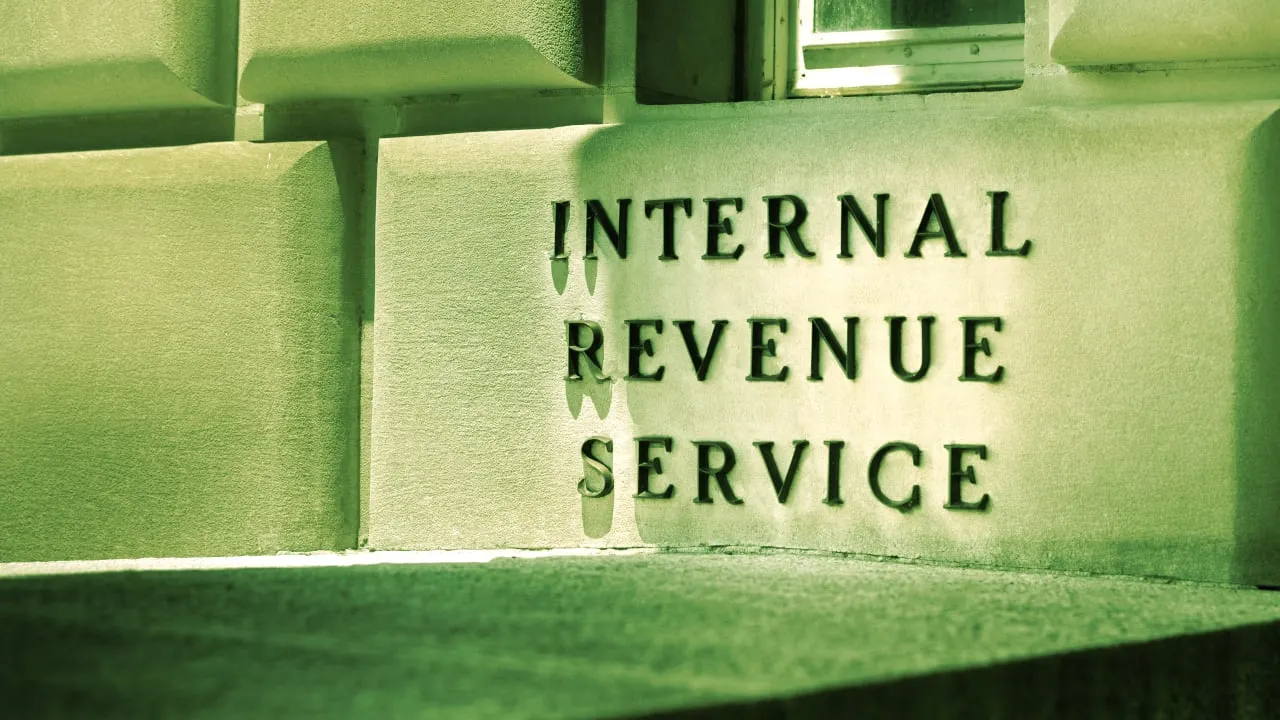Individuals in the United States who planned on padding their retirement accounts with JPEGs may want to reconsider, following an announcement today from the Internal Revenue Service (IRS) that it may preclude NFTs from IRAs.
The IRS and U.S. Treasury Department announced that they plan to issue guidance that could cause NFTs to be treated similarly to physical collectibles like art, coins, antiques, and alcohol, which retirement savers cannot add to their accounts.
Additionally, classifying NFTs as collectibles could impact how they’re taxed when swapped or sold on secondary markets. Depending on a person’s income, short-term capital gains tax—which NFTs are subject to—ranges from 10% to 37%. But capital gains on collectibles is capped at 28%.
“It appears that the IRS is intending to classify NFTs as digital receipts—which is essentially what they are,” Timothy Cradle, Director of Regulatory Affairs at Blockchain Intelligence Group, told Decrypt. “That means in a scenario where one has an NFT JPEG, then the JPEG is the collectible for the purpose of taxation and not the NFT itself.”
As part of its process for issuing new guidance, the IRS and Treasury Department requested comments on the proposed changes, allowing people to respond to questions such as, “What burdens does the analysis impose?” and “What factors might be considered to determine whether a digital file constitutes a ‘work of art?'”
The agencies said that they will accept comments that will be made public until June 19. On Crypto Twitter, some traders commended the IRS and Treasury Department for taking what they see as a nuanced approach instead of regulating through enforcement.
Dept. of Treasury & the IRS just asked for public comment on whether NFTs should be classified as "collectibles" for tax purposes. Kudos to them for soliciting public comments to make informed reg decisions rather than regulating by enforcement! They propose an interesting...
— Shoedog 🇺🇦 (@sh0edog) March 21, 2023
NFTs are unique digital tokens minted on networks like Ethereum or Solana used to represent the ownership of an item, typically digital art. But NFTs are also sometimes used to grant access to an event like a concert, or verify the ownership of a physical object—even a house.
Until the IRS formulates its new guidance on NFTs, the agency said it would use a so-called "look-through analysis" to determine whether an NFT should be classified as a collectible, meaning it will look at the underlying item the NFT represents ownership of.
For example, the IRS said that an NFT that represents the ownership of a gem would be classified as a collectible like gems currently are. Alluding to the metaverse, the agency said that an NFT granting its owner the right to “use or develop a ‘plot of land’ in a virtual environment” would not generally be considered a collectible.
Cradle suggested the guidance could have impacts beyond taxpayers, potentially bolstering the “argument that NFT marketplaces are not money transmitters in the way other crypto exchanges are.”
He said that the guidance could impact how NFT marketplaces are subject to anti-money laundering (AML) and know-your-customer (KYC) rules designed in the U.S. to prevent criminals from using services offered by banks or cryptocurrency exchanges to launder funds. He added that this could change if the Financial Crimes Enforcement Network (FinCEN) issues related guidance.
“This will both limit the likelihood that NFT marketplaces have to comply with certain anti-money laundering laws and/or hold money transmission licenses,” Cradle said. “Conversely, it will raise the risk of NFTs being used for money laundering, as it is very easy to convert cryptocurrency to tradable NFTs.”

